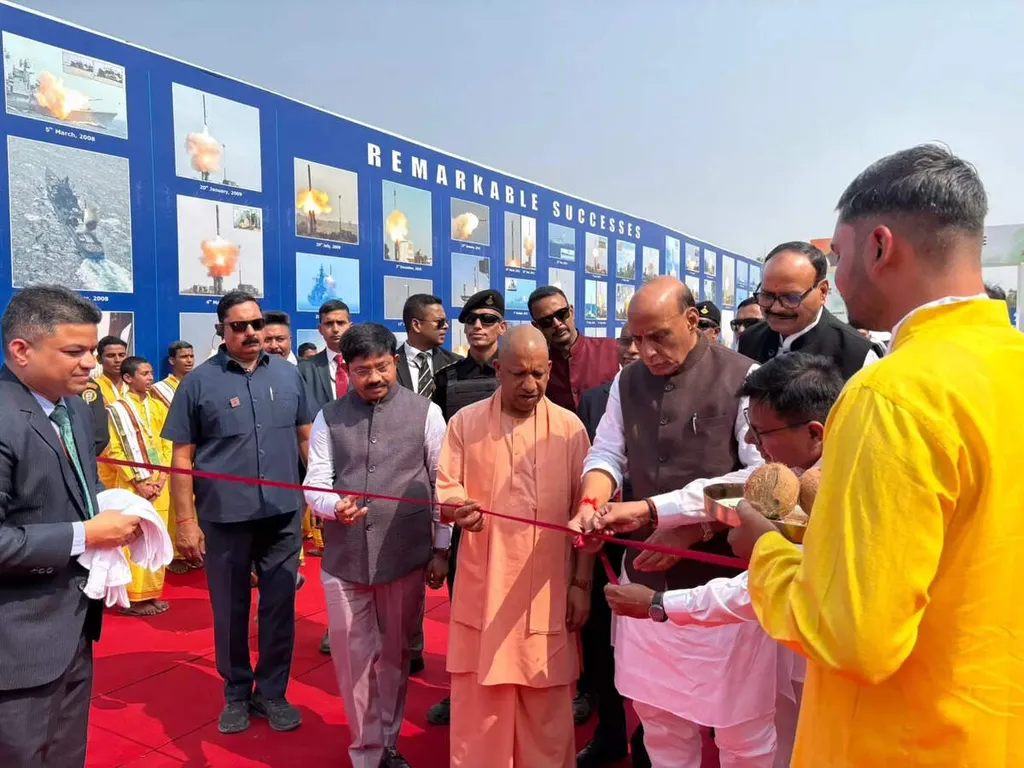India’s defence sector has taken a significant leap forward with the flagging-off of the first batch of BrahMos missiles manufactured at the BrahMos Integration and Testing Facility Centre in Lucknow. The event, presided over by Raksha Mantri Shri Rajnath Singh and Uttar Pradesh Chief Minister Shri Yogi Adityanath, underscores India’s growing self-reliance in defence manufacturing and its ambition to emerge as a global leader in military technology.
The BrahMos Integration and Testing Facility Centre, inaugurated just five months ago, represents a cornerstone of the Uttar Pradesh Defence Industrial Corridor. Its rapid operationalisation and the successful production of BrahMos missiles highlight India’s ability to develop and deploy advanced weapon systems at an unprecedented pace. The facility, built at a cost of Rs 380 crore, is expected to produce approximately 100 missile systems annually, reinforcing India’s strategic capabilities while generating substantial economic benefits.
Raksha Mantri Shri Rajnath Singh emphasised the strategic significance of BrahMos, describing it as more than just a missile—it is a symbol of India’s indigenous defence prowess. “Every inch of Pakistan’s territory is now within the reach of BrahMos,” he declared, referencing the missile’s role in Operation Sindoor. This operation, he noted, demonstrated that victory has become a habit for India, and the nation must now further enhance its defence capabilities.
The BrahMos missile, known for its supersonic speed, long-range strike capability, and precision guidance system, has become a cornerstone of India’s military arsenal. Its export to the Philippines and potential future collaborations signal India’s transition from a defence importer to a global supplier. This shift aligns with Prime Minister Narendra Modi’s vision of an Aatmanirbhar Bharat, where India is not only self-reliant but also a leader in defence technology by 2047.
Shri Rajnath Singh also highlighted the economic implications of the BrahMos facility, noting that its turnover will reach Rs 3,000 crore in the next financial year, with GST collections of around Rs 500 crore. This revenue, he said, will fund critical infrastructure projects, including schools and hospitals, demonstrating how defence manufacturing can drive broader economic growth.
The Raksha Mantri stressed the importance of strengthening small industries to ensure a resilient supply chain. “We must develop all types of indigenous technologies so that our supply chain remains within India,” he said, calling for a project roadmap to integrate small entrepreneurs into the defence ecosystem. This approach will not only reduce reliance on foreign suppliers but also foster innovation and job creation.
Uttar Pradesh Chief Minister Shri Yogi Adityanath praised the BrahMos facility as a symbol of self-reliance and a catalyst for regional development. He noted that the UP Defence Industrial Corridor has already provided employment to over 15,000 youth, positioning the state as a hub for defence manufacturing and innovation.
The BrahMos facility’s success is a testament to India’s ability to blend strategic autonomy with industrial growth. As the nation continues to invest in defence technology, it is poised to redefine its role in global security and economic leadership. The BrahMos Integration and Testing Facility Centre in Lucknow stands as a beacon of this transformation, embodying India’s commitment to a future where self-reliance and technological advancement go hand in hand.

